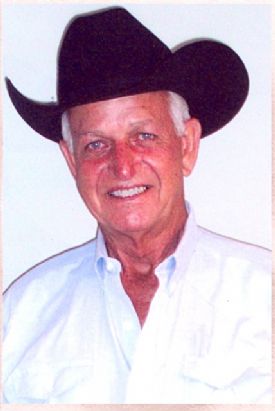Kenny Pugh, Sr.

Born in 1938, Kenny Pugh grew up in LeGrande, California. His family had a ranch in the mountains, in Squaw Valley, and he had some ranching relatives.
At thirteen, he began going to Idaho to work with a relative, and when he was fifteen he never went home. He began cowboying, mainly in the high country, where at times it could get as cold as forty below!
He moved back to California, working on a large ranch for Jack Reynolds. “I cowboyed and broke colts,” Kenny explained. “In the winter we did a lot of leather work. At the time, I was only interested in rodeos.”
In 1961, Jack took Kenny to the fair to watch the stock horse classes. While watching the class, he decided that he could do it.
A few months later, Jack took a couple of horses to the Paso Robles Fair to compete in the stock horse class. On a 3-year-old mare, he placed second, but on his other horse, a gelding, he didn’t win anything. “A friend came up to me after the show, and told me that the reason I didn’t place was because I missed a hind lead in the figure eight. I didn’t even know what a lead was at that point!” laughed Kenny.
Kenny met a young trainer at that show. Greg Ward and Kenny became friends, often times traveling to shows and sharing rooms. “I’d pick Greg’s brain quite a bit,” said Kenny.
Kenny worked on that ranch for five years, but when many people started bringing horses by to be trained, he decided it was time to try to make it on his own.
A couple of the horses that Kenny had early success with were Digger Bill, who he won quite a bit on in the hackamore, and Daisy Mae. “Digger Bill was pretty ornery, and Daisy Mae was as sweet as she could be.”
Later on, in the 1970’s, Kenny had a mare named Minnie Gal, that he won a lot with. She later produced Kenny’s Snaffle Bit Futurity Champion, Sanpeppy Smoke. Kenny had many other Snaffle Bit finalists and Top Ten finishes, and a Reserve Championship in 1979.
Kenny never took lessons, or apprenticed with any of the successful trainers. He says he learned by being observant, watching and studying what the other riders were doing. “Early on, my horses were never bored,” laughed Kenny. “I’d be at a show, and see someone do something I thought was cool. So I’d go home, and work on it with my horse. The next show, I’d see something different, so that’s what we’d do.”
Kenny says that he was very impressed with Johnny Brazil in the early days, and that he learned more about how to show a horse from Bobby Ingersoll. “Back in the early day, we didn’t hesitate after a maneuver, we just went. I watched Bobby, and realized that he was letting his horse hesitate just a bit – so that he’d be in good position for the next maneuver. I started doing this same thing.”
Kenny started concentrating on cutting horses in the late 1980’s, but says he wished he had more time to get back to the reined cow horses. He still trains some outside horses at his ranch in Simonton, Texas, and says that although they are cutting horses, he treats them like a reined cow horse. “They can all do lead changes, now that I know what they are,” joked the trainer.
When asked how he felt about being inducted into the NRCHA Hall Of Fame, Kenny replied. “I consider being inducted a real honor. I always hoped that one day I would be among the Hall Of Fame members. I thought I had been away for so long, no one would remember me! I’m very pleased about it. I love the event, I consider it a very great honor.